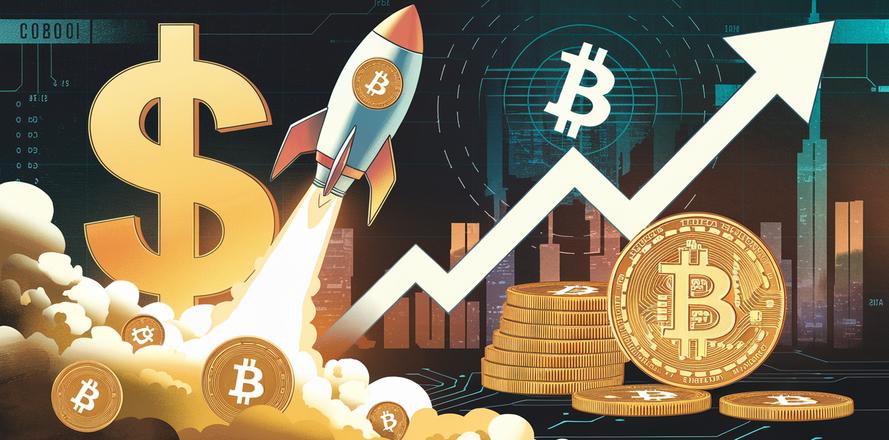Bitcoin Reaches $100K – Is $150K the Next Stop?

The crypto world just hit a major milestone: Bitcoin has reached the much-anticipated $100,000 mark. For years, this number has been the subject of speculation, heated debates, and a lot of "when moon" memes. Now that it’s here, the question isn’t just “how did we get here?” but rather, “what comes next?”
How Did We Get Here?
The road to $100K wasn’t exactly smooth sailing. From market crashes and regulatory crackdowns to the growing adoption of Bitcoin as digital gold, this milestone reflects the evolving narrative around cryptocurrency.
Bitcoin’s rise to this level wasn’t driven by hype alone. Several factors have fueled this surge:
- Institutional Interest: Over the past few years, Bitcoin has gained legitimacy in the eyes of institutional investors. From major companies like Tesla adding it to their balance sheets to asset managers including it in portfolios, Bitcoin is no longer just for retail investors or tech-savvy enthusiasts.
- Global Economic Instability: Inflation fears, banking collapses, and the weakening of traditional fiat currencies have pushed more people to see Bitcoin as a hedge.
- Scarcity and Halving Cycles: With the next halving event just around the corner, the reduced supply of Bitcoin creates upward price pressure. The $100K milestone is as much about fundamentals as it is about sentiment.
What’s Next – $150K on the Horizon?
While $100K is a significant milestone, it doesn’t mean the ride is over. Analysts and enthusiasts alike are now turning their attention to $150K as the next psychological barrier. But how realistic is that?
Factors That Could Drive Bitcoin Higher:
- Increased Adoption: From El Salvador making Bitcoin legal tender to major retailers accepting it as payment, adoption is growing. If this trend continues, demand could push the price higher.
- ETFs and Regulation: The potential approval of Bitcoin ETFs in the U.S. could open the floodgates for new investors. While regulation is a double-edged sword, clarity often attracts institutional money.
- Macro Trends: As traditional markets face uncertainty, Bitcoin’s narrative as “digital gold” is becoming more appealing.
Challenges Ahead:
That said, nothing in crypto is guaranteed. Volatility is still a hallmark of this market, and Bitcoin’s price could face resistance at higher levels. Additionally, regulatory changes or major market sell-offs could impact its trajectory.
Why Does It Matter?
The $100K milestone isn’t just a number; it’s a signal. It shows how far Bitcoin has come from being an obscure idea in a whitepaper to a globally recognized asset class. More importantly, it’s a reminder that Bitcoin is here to stay, whether as a store of value, a medium of exchange, or a catalyst for financial innovation.
Final Thoughts
Hitting $100K is exciting, but it’s just one stop on Bitcoin’s journey. Whether it’s $150K, $200K, or beyond, Bitcoin’s value isn’t just about price—it’s about what it represents: a shift in how we think about money, trust, and financial freedom.
Related articles

Should Amazon Add Bitcoin to Its Balance Sheet?
As Bitcoin continues to gain traction among major corporations, Amazon faces calls from shareholders to follow suit. The move could position Amazon as a leader in the digital economy, signaling innovation and embracing Bitcoin’s potential as a hedge against inflation and a store of value.
Read more
Crypto-Asset Service Providers (CASPs): New Rules and Responsibilities Under MiCA
MiCA introduces a regulatory framework for Crypto-Asset Service Providers (CASPs) in the EU, focusing on registration, prudential requirements, conduct rules, and AML/CFT compliance. CASPs must be authorized, maintain capital reserves, safeguard client assets, and uphold transparency and fair practices. Compliance with MiCA ensures market stability, consumer protection, and cross-border service opportunities while reducing regulatory risks.
Read more
Understanding MiCA: The Classification of Crypto-Assets
MiCA classifies crypto-assets into three types: e-money tokens (pegged to a fiat currency), asset-referenced tokens (backed by multiple assets), and other crypto-assets (utility tokens). Each category has specific regulations to ensure consumer protection, market stability, and transparency, helping businesses comply and investors make informed decisions.
Read more